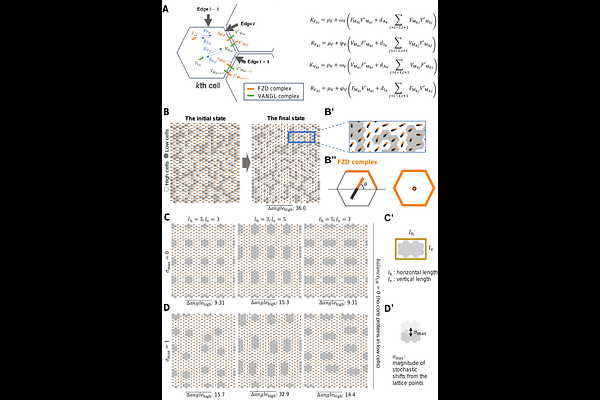Directional alignment of different cell types organizes planar cell polarity

Directional alignment of different cell types organizes planar cell polarity
Arata, M.; Koyama, H.; Fujimori, T.
AbstractPlanar cell polarity (PCP) refers to unidirectional alignment of cell polarity in the plane of epithelial tissues. Previous studies in Drosophila wing epithelia have shown that imbalances in the amount of core PCP proteins (core proteins) between adjacent cells disrupt PCP. In contrast, various tissues maintain PCP despite containing multiple cell types with different levels of core proteins. The mechanisms by which these tissues resist imbalances in core protein levels and preserve PCP remain unclear. Here, we demonstrated that cell-type distribution plays a crucial role in resisting such imbalances. In the mouse oviduct, Secretory cells (SCCs) have low levels of core proteins, whereas multiciliated cells (MCCs) exhibit high levels. We found that SCCs are aligned along the ovary-uterus axis that is consistent with the orientation of the oviduct PCP. Furthermore, through a combination of mathematical modeling, deep learning, and statistical modeling, we showed that orientation of cell-type alignment is a key aspect of cell-type distribution that affects PCP. As predicted by these theoretical analyses, core proteins were locally misoriented where SCCs were not aligned along the ovary-uterus axis. Finally, we found that in oviducts lacking the core protein CELSR1, the alignment of SCCs was disrupted, suggesting that positive feedback regulation between core proteins and cell alignment contributes to PCP maintenance. Our findings highlight the overlooked role of spatial arrangement of cell-types in PCP maintenance that is essential for the proper function of epithelial tissues.